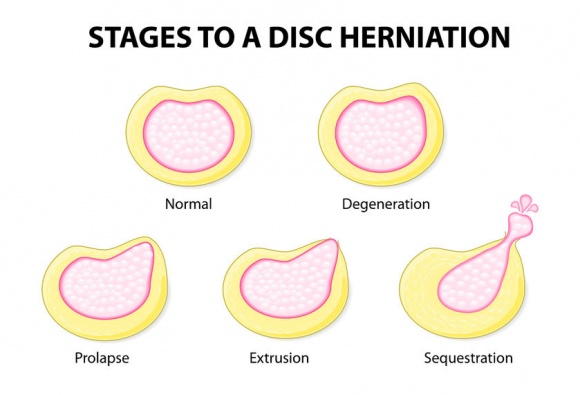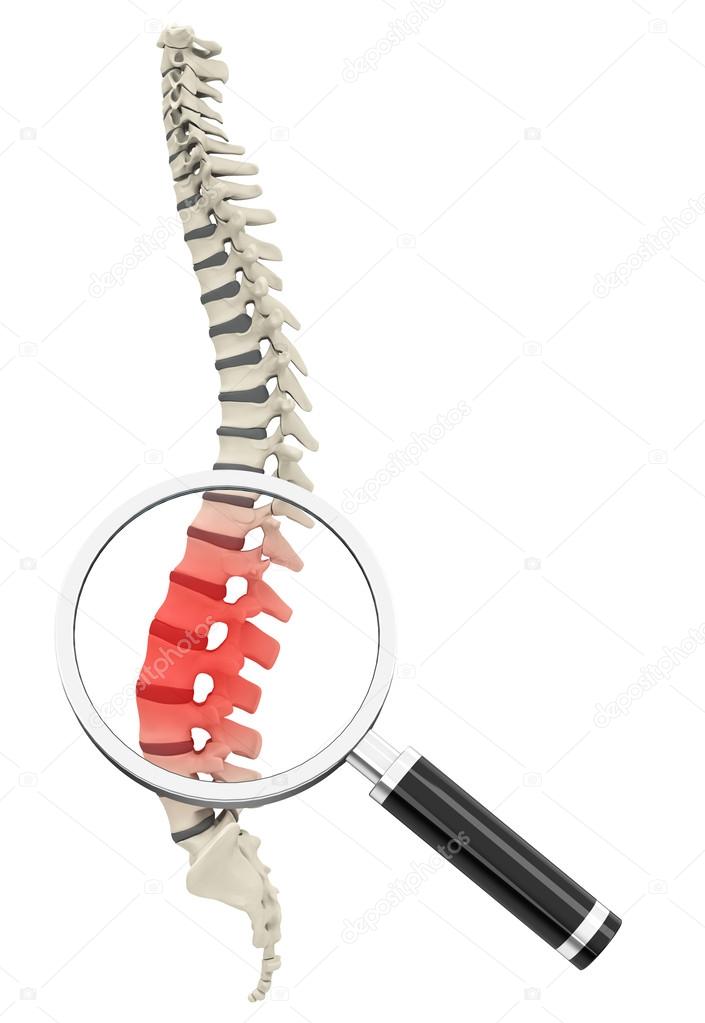Disc prolapse: Disc hernias occur in vertebrae that support more weight and mechanical movement. The other terms for this condition are “slipped disc” or “disc hernia”. For this reason, the last lumbar vertebra (L5) suffers the most from this problem. It occurs mainly when vertebrae greater than L5 begin to be more rigid due to postural and mechanical tensions on a day-to-day basis.
Many patients have low back pain as a result of disc prolapse and have the diagnosis of disc hernia and causing all their symptoms. But this is not always the case since a large number of patients with L5-S1 hernia do not have any symptoms. The problem and pain appear when it presses the surrounding structures.
Why does a disc prolapse occur?
With age, the vertebral disc loses water and degenerates reducing the intervertebral space. The fibrous ring is broken and the nucleus pulposus begins to invade the ring. Finally, the flexion of the spine generates so much pressure in the anterior part of the vertebra that the nucleus pulposus moves back and generates a protrusion that progresses to what we call a disc hernia.
Like every disease, the herniation process has different phases according to which it will give different symptoms and therefore different forms of treatment.
 Phases of herniation and its symptoms
Phases of herniation and its symptoms
As we have seen, the hernia is the result of a burden or a degenerative process where the following phases are differentiated:
Protrusion: The core material begins to break the nearest fibres of the ring but continues by the outermost fibres of the disc. In this case, no pain is usually felt since it is a very poorly innervated area. If we feel pain in the back, the problem will be in the posterior joints of the vertebra.
Prolapse: The last fibres are broken and begin to press on the vertebral ligament. As the posterior ligament begins to degenerate, the fluid contained in the joint can emerge and promote inflammatory processes in the posterior joints causing pain in the back. If the prolapse begins to tighten the nerve root it will give pain radiated in the leg with possible lack of strength, what we call sciatica.
Extrusion: The nuclear material breaks the posterior vertebral common ligament and protrudes above or below the disc space but remains in contact with the disc.
Treatment
If we have low back pain and a diagnosis of L5-S1 protrusion we have to take into account that this is not what causes low back pain. We must keep the protrusion in mind so that it does not degenerate, but the treatment must be focused on treating the inflammation around the posterior joints, which are the ones that cause us pain.
If we have referred pain in the leg, the most likely problem is root compression (prolapse, extrusion or vertebral pinch). In this case, the treatment must be focused on opening the intervertebral space. In addition, as the hernia occurs in areas where the spine supports more load and performs more movement, we must also mobilize other vertebral segments and thus alleviate the hypermobile segment.
Treatments for disc prolapse can include pain management until the disc prolapse heals, spinal injections, keyhole procedures, laser disc treatment or minimally invasive open surgery.

